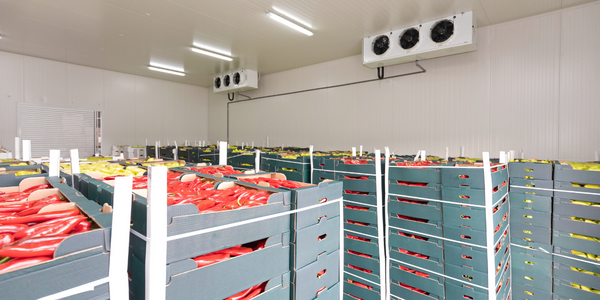Customer Company Size
Large Corporate
Region
- America
Country
- United States
Product
- AgileAssets® Pavement Analyst
Tech Stack
- Software-as-a-Service (SaaS)
- Geographic Information System (GIS)
Implementation Scale
- Enterprise-wide Deployment
Impact Metrics
- Cost Savings
- Productivity Improvements
Technology Category
- Platform as a Service (PaaS) - Connectivity Platforms
Applicable Industries
- Transportation
Applicable Functions
- Maintenance
Use Cases
- Infrastructure Inspection
- Predictive Maintenance
Services
- System Integration
- Training
About The Customer
The Texas Department of Transportation (TxDOT) is a government agency in the U.S. state of Texas. TxDOT is responsible for maintaining 80,000 miles of road and for supporting aviation, rail, and public transportation across the state. TxDOT and its 11,000 employees are committed to working with others to provide safe and reliable transportation solutions for Texas by maintaining a safe system, addressing congestion, connecting Texas communities, and being a Best in Class state agency. The department's goals for the new Pavement Management System (PMS) implementation were to optimize the impact of maintenance and rehabilitation funds, standardize reporting to external stakeholders, enhance internal spatial reporting capabilities for pavement management data, and broaden the system’s customer base.
The Challenge
The Texas Department of Transportation (TxDOT) was managing over 80,000 centerline miles of roads that support more than 500,000,000 daily vehicle miles traveled. The TxDOT pavement program is very large, and it’s growing rapidly to accommodate a fast-growing state population. Beyond the sheer size of its pavement program, TxDOT also faced the challenge of completing the migration from an environment comprised of four standalone applications to a new, comprehensive PMS in a very short time frame. Additional challenges included the need to develop a new Geographic Information System (GIS) module and to train the staff of numerous statewide districts on how to most effectively use the new PMS.
The Solution
TxDOT implemented the AgileAssets Pavement Analyst (PMS) to serve as the department’s new, modern PMS. The key components of the PMS implementation included delivery via a Software-as-a-Service (SaaS) model, which makes the system accessible to TxDOT staff via web browser on desktop PCs, laptops, or mobile devices such as tablets. The system was deployed as a comprehensive system that includes an enterprise-class database, graphical reporting, a visual project-editing tool, and GIS integration. The system also has advanced analytical capabilities that support multiyear, multi-constraint analysis and the ability to turn analysis into work plans. Robust reporting tools were also included that support the ability to answer questions from external stakeholders regarding funding needs, performance measures, and project selections.
Operational Impact
Quantitative Benefit

Case Study missing?
Start adding your own!
Register with your work email and create a new case study profile for your business.
Related Case Studies.

Case Study
Airport SCADA Systems Improve Service Levels
Modern airports are one of the busiest environments on Earth and rely on process automation equipment to ensure service operators achieve their KPIs. Increasingly airport SCADA systems are being used to control all aspects of the operation and associated facilities. This is because unplanned system downtime can cost dearly, both in terms of reduced revenues and the associated loss of customer satisfaction due to inevitable travel inconvenience and disruption.

Case Study
IoT-based Fleet Intelligence Innovation
Speed to market is precious for DRVR, a rapidly growing start-up company. With a business model dependent on reliable mobile data, managers were spending their lives trying to negotiate data roaming deals with mobile network operators in different countries. And, even then, service quality was a constant concern.

Case Study
Digitize Railway with Deutsche Bahn
To reduce maintenance costs and delay-causing failures for Deutsche Bahn. They need manual measurements by a position measurement system based on custom-made MEMS sensor clusters, which allow autonomous and continuous monitoring with wireless data transmission and long battery. They were looking for data pre-processing solution in the sensor and machine learning algorithms in the cloud so as to detect critical wear.

Case Study
Cold Chain Transportation and Refrigerated Fleet Management System
1) Create a digital connected transportation solution to retrofit cold chain trailers with real-time tracking and controls. 2) Prevent multi-million dollar losses due to theft or spoilage. 3) Deliver a digital chain-of-custody solution for door to door load monitoring and security. 4) Provide a trusted multi-fleet solution in a single application with granular data and access controls.

Case Study
Vehicle Fleet Analytics
Organizations frequently implement a maintenance strategy for their fleets of vehicles using a combination of time and usage based maintenance schedules. While effective as a whole, time and usage based schedules do not take into account driving patterns, environmental factors, and sensors currently deployed within the vehicle measuring crank voltage, ignition voltage, and acceleration, all of which have a significant influence on the overall health of the vehicle.In a typical fleet, a large percentage of road calls are related to electrical failure, with battery failure being a common cause. Battery failures result in unmet service agreement levels and costly re-adjustment of scheduled to provide replacement vehicles. To reduce the impact of unplanned maintenance, the transportation logistics company was interested in a trial of C3 Vehicle Fleet Analytics.

Case Study
3M Gains Real-Time Insight with Cloud Solution
The company has a long track record of innovative technology solutions. For example, 3M helps its customers optimize parking operations by automating fee collection and other processes. To improve support for this rapidly expanding segment, 3M needed to automate its own data collection and reporting. The company had recently purchased the assets of parking, tolling, and automatic license plate reader businesses, and required better insight into these acquisitions. Chad Reed, Global Business Manager for 3M Parking Systems, says, “With thousands of installations across the world, we couldn’t keep track of our software and hardware deployments, which made it difficult to understand our market penetration.” 3M wanted a tracking application that sales staff could use to get real-time information about the type and location of 3M products in parking lots and garages. So that it could be used on-site with potential customers, the solution would have to provide access to data anytime, anywhere, and from an array of mobile devices. Jason Fox, Mobile Application Architect at 3M, upped the ante by volunteering to deliver the new app in one weekend. For Fox and his team, these requirements meant turning to the cloud instead of an on-premises datacenter. “My first thought was to go directly to the cloud because we needed to provide access not only to our salespeople, but to resellers who didn’t have access to our internal network,” says Fox. “The cloud just seemed like a logical choice.”







